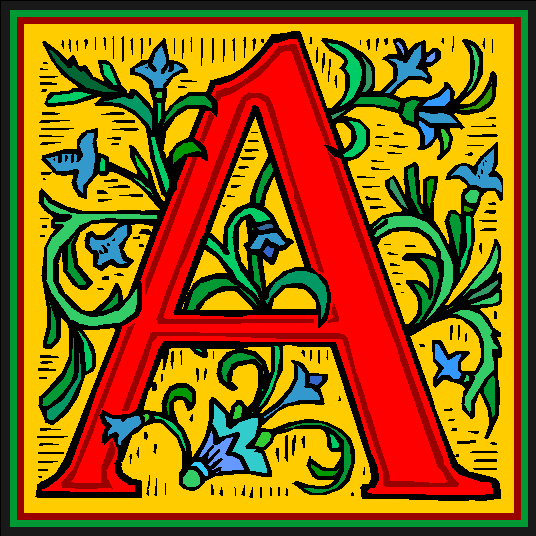History Alphabet

is for Algarsthorpe.
On farm land between Bawburgh and Marlingford
there once stood a small village or hamlet called Algarsthorpe and a chapel
dedicated to St. Mary Magdalen. Algarsthorpe Farm still carries the
name and nearby Chapel Farm is close to the area where the chapel once
stood. It is recorded as serving
Algarsthorpe until 1476, when the parish was united with Great Melton but it
seems to have still been in use until the Disillusion of the
Monasteries between 1536 and 1540,
when the Pope refused Henry VIII and Catherine of Aragon’s divorce.
There is no record of when or why the village was
demolished and there is nothing to be seen above ground now, although a
large quantity of human bones were discovered in the area in 1930, and in
the garden of Chapel Farm when new buildings were erected there. More
bones were found close by during an investigation in 1969. A will,
written by two brothers, Eadwine and Wulfric in 1516, stated that whoever
lived the longest would inherit land including Lithle Meddeltone (Little
Melton) and Eskeresthorpe (Algarsthorpe).
The word ‘thorpe,’ in Old Norse meant secondary
settlement, and so Eskeresthorpe or Algarsthorpe was probably the secondary
settlement of Algar or Eskere.
A is also for Mary Adams
A character from Bawburgh's distant past, who was employed at Lodge Farm which is situated at the most distant point of Bawburgh's eastern boundary, and which at the time was owned by a Mr. Woodbine. It has a fascinating history of its own (see L is for Lodge Farm). Mary Adams was hanged on 11th April 1791 for the crime of setting light to the outbuildings of Lodge Farm the previous year. She was held at Norwich Castle for three months awaiting trial - a member of the jury was curiously a Mr. William Clarke Woodbine!
A also stands for Archaeology
Archaeology covers the myriad of findings of an archaeological nature within the village boundaries. A flint fossil found at Glenlodge Farm in 1983, was declared by the British Museum to have existed 100 million years before man - but had arrived in Bawburgh by glacial drift. More "up to date", in 1941, Bronze Age pottery was found, again on the same farmland, during ploughing. The area where it was found is now a Golf Course. There are actually 76 archaeological finds or sites in the parish of Bawburgh lodged at the Norfolk Landscape Archaeology Unit, some of these are present-day listed sites. There are also many Roman finds - including a Roman cemetery with fourteen cremations and five or six inhumations, which was the subject of archaeological digs in 1949 and 1971. The Castle Museum at Norwich looks after those findings. Roman and Iron Age pottery sherds have been found on other sites in the village, and there is one, possibly two, Roman roads, the largest of which is thought to connect with the Dereham Road, eventually reaching the river Wensum in Norwich at the point where in later times, Bishop’s Bridge was built. For more information, see - Heritage Norfolk page for Bawburgh
A also stands for the Rev. Charles Addison
Return to History AlphabetVicar of Bawburgh between 1932 and 1938. Bawburgh's long list of Vicars is explored under